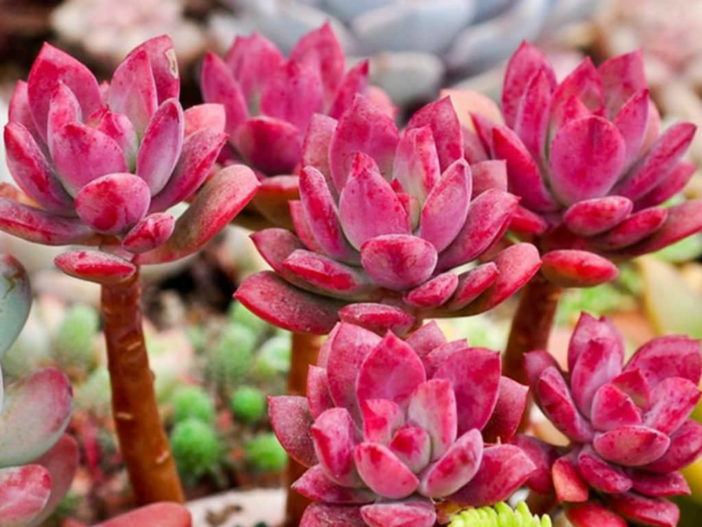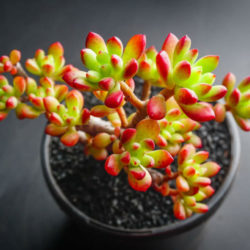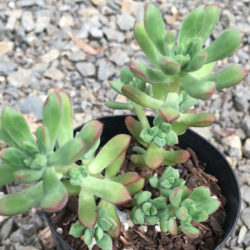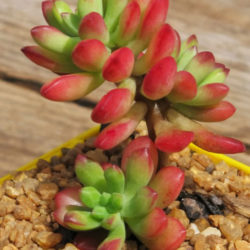Scientific Name
Echeveria macdougallii E.Walther
Synonym(s)
Echeveria sedoides
Scientific Classification
Family: Crassulaceae
Subfamily: Sempervivoideae
Tribe: Sedeae
Genus: Echeveria
Etymology
The specific epithet "macdougallii (mak-doo-GALL-ee-eye)" honors the discoverer of the species Thomas Baillie MacDougall "Don Tomas" (1895-1973), a Scottish horticulturist, botanist, and anthropologist with a passion for nature.
Origin
Echeveria macdougallii is native to southern Mexico (Oaxaca).
Description
Echeveria macdougallii is an upright succulent shrub with small rosettes that grow on woody stems. It can grow up to 12 inches (30 cm) tall, while the rosettes can reach up to 1.2 inches (3 cm) in diameter. The leaves are thick and fleshy, elliptic-oblanceolate in shape, measuring up to 0.6 inches (1.5 cm) long and 0.15 inches (0.4 cm) wide. They are pastel green in color and have vivid pink to red edges. The leaf color can intensify in the cooler months.
The flowers are bell-shaped, red with yellow on covered edges of the petals, and appear in typically 3-flowered clusters on stalks that can reach up to 3.6 inches (9 cm) in height in summer. The flowers can grow up to 0.5 inches (1.2 cm) long and 0.3 inches (0.8 cm) in diameter.

Hardiness
USDA hardiness zones 9a to 11b: from 20 °F (−6.7 °C) to 50 °F (+10 °C).
How to Grow and Care
Most of the common Echeveria species are not complicated succulents to grow, provided you follow a few basic rules. First, be careful never to let water sit in the rosette as it can cause rot or fungal diseases that will kill the plant. Additionally, remove dead leaves from the bottom of the plant as it grows. These dead leaves provide a haven for pests, and Echeverias are susceptible to mealy bugs. Finally, as with all succulents, careful watering habits and plenty of light will help ensure success.
Repot as needed, preferably during the warm season. To repot a succulent, make sure the soil is dry before repotting, then gently remove the pot. Knock away the old soil from the roots, making sure to remove any rotted or dead roots in the process. Treat any cuts with a fungicide.
Most Echeverias can be easily propagated from leaf cuttings, although some are better from seeds or stem cuttings. To propagate a leaf cutting, place the individual leaf in potting soil for succulents and cover the dish until the new plant sprouts.
Learn more at How to Grow and Care for Echeveria.
Links
- Back to genus Echeveria
- Succupedia: Browse succulents by Scientific Name, Common Name, Genus, Family, USDA Hardiness Zone, Origin, or cacti by Genus
Photo Gallery
Click on a photo to see a larger version.


